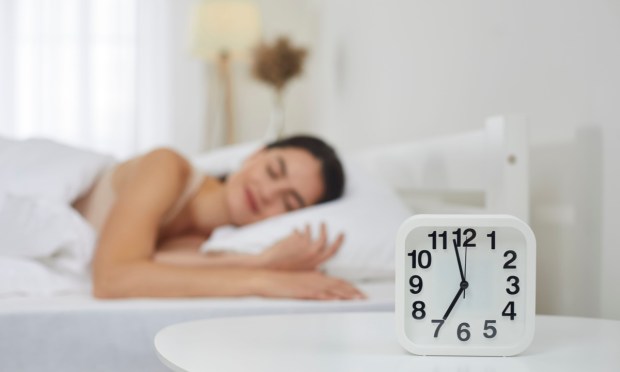Why Retailers Don’t Want Consumers to Get an Extra Hour of Sleep

On Sunday (Nov. 5), most U.S. states will “fall back” an hour, giving people an extra wink of sleep. While the states that embrace this time change will relish the extra hour of slumber, the existence of Daylight Saving Time (DST) has long been a subject of debate. Many have claimed it is linked to a decline in crime rates, thanks to heightened daytime activity, which curtails opportunities for criminal acts.
Nonetheless, with the approach of the winter months, when daylight fades earlier, one might wonder how people’s hibernation plans will affect retailers.
Where It All Began
Benjamin Franklin is often credited with the “lightbulb moment” of adjusting our clocks to maximize longer summer days during his time in Paris. However, the individual recognized for kickstarting this concept was William Willett, a British builder who proposed the idea to Parliament as a means for the nation to optimize daylight utilization.
Nevertheless, it was Germany that pioneered the adoption of seasonal time changes, driven by the urgent need to conserve energy during the First World War. This approach quickly gained popularity, with most European nations, the U.S. and the United Kingdom, as well as their allies, embracing Daylight Saving Time by 1918. Nonetheless, many countries abandoned the system in the post-war years, only to reinstate it when the need for energy conservation arose once more.
What More Sleep Can Do
With the extra hour of sleep, people typically experience a heightened sense of rest and alertness the next day. This increased wakefulness often translates into improved productivity in the workplace. Well-rested employees tend to make fewer mistakes, operate with greater efficiency and enjoy higher job satisfaction. This, in turn, can be a boon for businesses by elevating work quality and reducing absenteeism.
However, as we gain an extra hour of sleep it also ushers in a slumberous shift in consumer behavior, especially in the retail realm.
For one, with the onset of darkness happening earlier, people tend to head home sooner, resulting in reduced foot traffic in commercial areas. This change can lead to lower sales for brick-and-mortar retail stores, especially those reliant on evening shoppers. Conversely, earlier sunsets can boost eCommerce sales.
In fact, according to research conducted by the JPMorgan Chase & Co. Institute, there was a noticeable 3.5% decrease in consumer spending in Los Angeles during the 30 days following the autumn time change. This study also analyzed the impact in San Diego and Denver, yielding similar results.
Among the most affected were grocery stores, experiencing a 5.9% decrease, and retail stores, with a 4.8% decline in spending. The primary reason for this decline is attributed to the nature of these establishments as places where people tend to engage in “impulse shopping.”
The Argument Against DST
The transition to daylight saving time in the spring has been “associated with significant public health and safety risks,” including heightened risk of heart issues, mood disorders and motor vehicle accidents, according to the American Medical Association. The organization backs the idea of adopting standard time as a permanent solution.
These time shifts also poses challenges for children and their parents when it comes to adaptation. For many people, it disrupts sleep routines.
Where DST Stands Today
In March, Sen. Marco Rubio (R-Fla.) reintroduced the Sunshine Protection Act, previously passed by the Senate in 2022 but not voted on in the House.
The Senate bill this year was sent to the Committee on Commerce, Science, and Transportation but saw no progress. Simultaneously, Rep. Vern Buchanan (R-Fla.) introduced a similar bill in the House, referred to the House Energy and Commerce Subcommittee on Innovation, Data, and Commerce.
Rubio, an advocate for this cause since 2018, expressed hope for the bill’s passage, citing bipartisan support in Congress and backing from 22 states. Since 2018, 19 states have passed legislation to establish year-round daylight-saving time if approved by Congress. Florida initiated this trend in 2018, with Colorado and Kentucky joining in 2022.
Other states, including Alabama, Delaware, Georgia, Idaho, Louisiana, Maine, Minnesota, Mississippi, Montana, Ohio, Oregon, South Carolina, Tennessee, Utah, Washington and Wyoming, have also taken steps in this direction. In California, voters supported permanent daylight-saving time in a 2018 ballot initiative, although no legislative action has been taken.
However, it’s important to recognize that, while states can independently switch to standard time, congressional approval is necessary for year-round daylight-saving time.

